“We approached the design with the idea of creating a building that can actively change its façade — not only to adapt to the weather and the cycle of seasons, but also to allow an adjustable level of intimacy inside, depending on the events.”d:
Stefan Prins, associate at Powerhouse Company
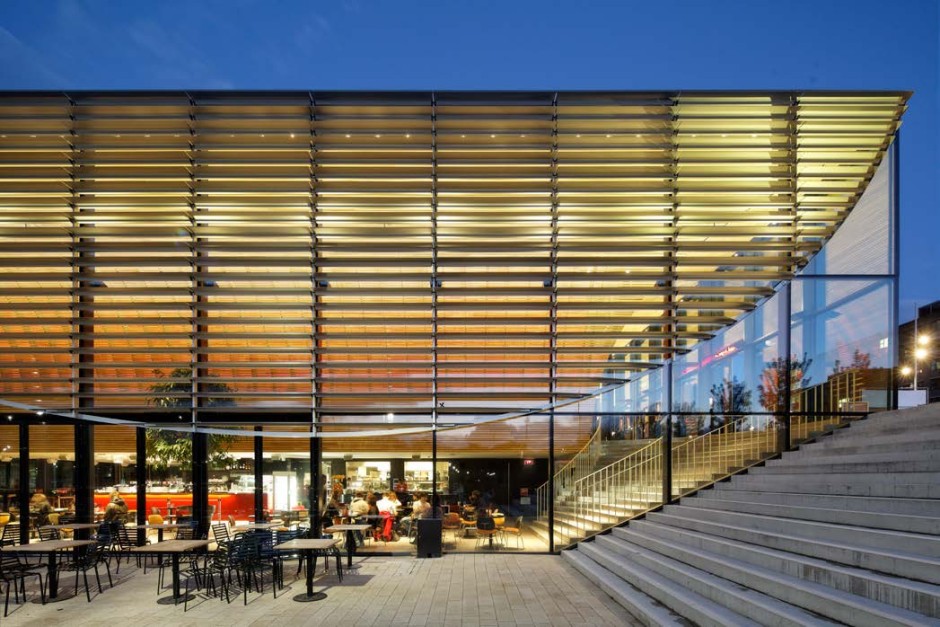
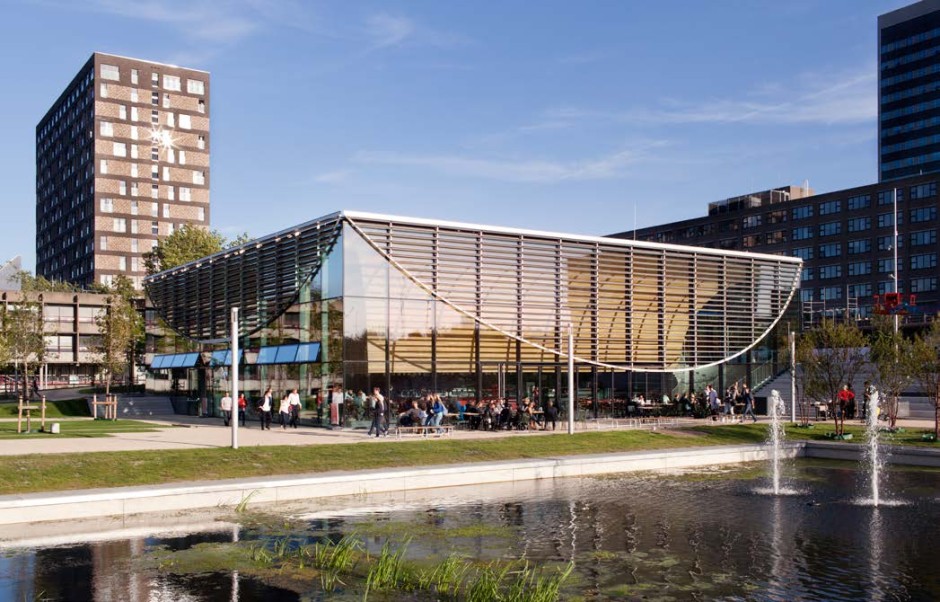
“By opening or closing the mechanical louvers, users can let in as much or as little light as they want. This leads to reduced energy consumption.”
Stefan Prins, associate at Powerhouse Company
The curved lines of the louvers that sweep across the four façades are based on the path of the sun and moderate the amount of natural light and heat according to the sun’s position. The appearance of the building changes continuously depending on the events inside the building and the weather outside the building. It is animated by the vibrant rhythm of the Student Center’s life, making it visible from the surrounding public spaces. The façade and its mechanical aluminum louvers, combined with the wooden interior ceiling, create a dynamic spatial experience. On a gray, Monday morning in winter, the Student Center can become an intimate, warm indoor space; on a warm summer Friday evening it can become an open and vibrant space.

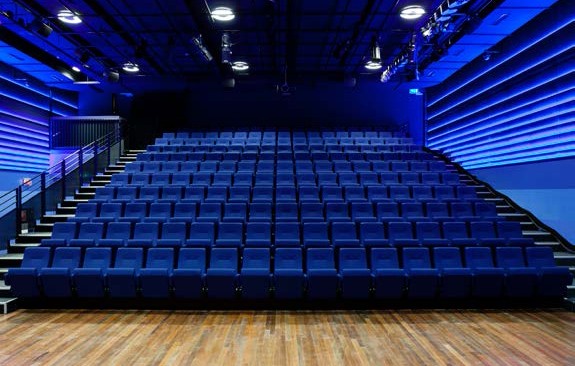
The transparency of the building is preserved by positioning all “dark space” programs that require an absence of daylight in the core of the building. This “logistical core” efficiently serves the publicly accessible spaces distributed around it.
On top of this logistical core, a multipurpose auditorium that offers room was placed for lectures, performances, and debates. This distribution of functions creates high flexibility in use, which was essential for the feasibility of this project.
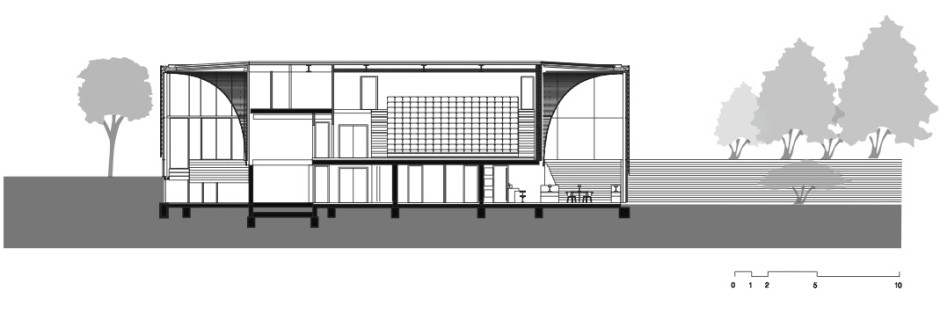
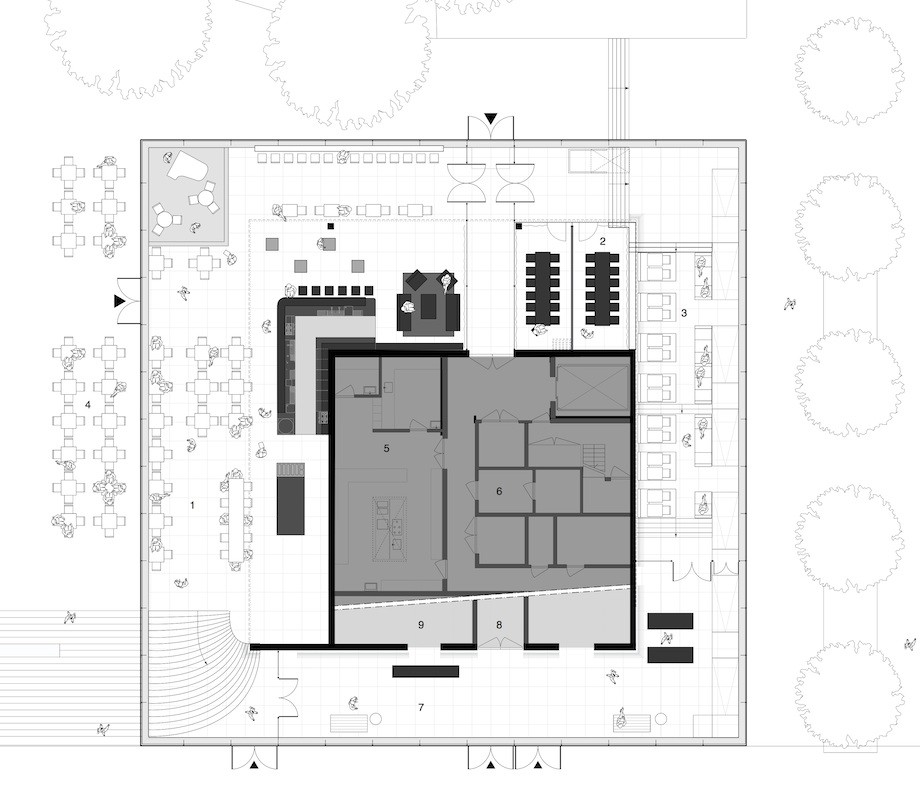
“I think one of the main reasons for the success of this project is the Archicad 3D model, which gave the contractor a great advantage in being able to deliver this level of precision and quality.”
Stefan Prins, associate at Powerhouse Company
Various technical measures were implemented to lower the energy impact of the building. A compact building volume, the positioning of the mass in the center core, a careful orientation of the program toward the sun— combined with the dynamic façade, the solar panels on the roof, the natural ventilation, and flexible zoning, transform this transparent building into a low consumption landmark.
With regard to the collaboration method on this project, both Powerhouse Company and De Zwarte Hond use Archicad so there was no need for IFC exchange. The role of both offices was 50/50 throughout the design and construction of the project. “We usually set up a specific team with expertise from both offices to fit the needs of the phase of the project,” Stefan said. “In practice, we worked on one location through a Teamwork project that architects, designers and project managers had access to. In addition, the Teamwork project was also accessible from ‘outside the office.’ This way the project was always available for both offices.”
According to Stefan, a project of this magnitude requires a unique approach. For example, using Archicad 16 with the CINEMA 4D plug-in to script some elements that they then imported into Archicad. “I think one of the main reasons for the success of this project is the Archicad 3D model, which gave the contractor a great advantage in being able to deliver this level of precision and quality.”

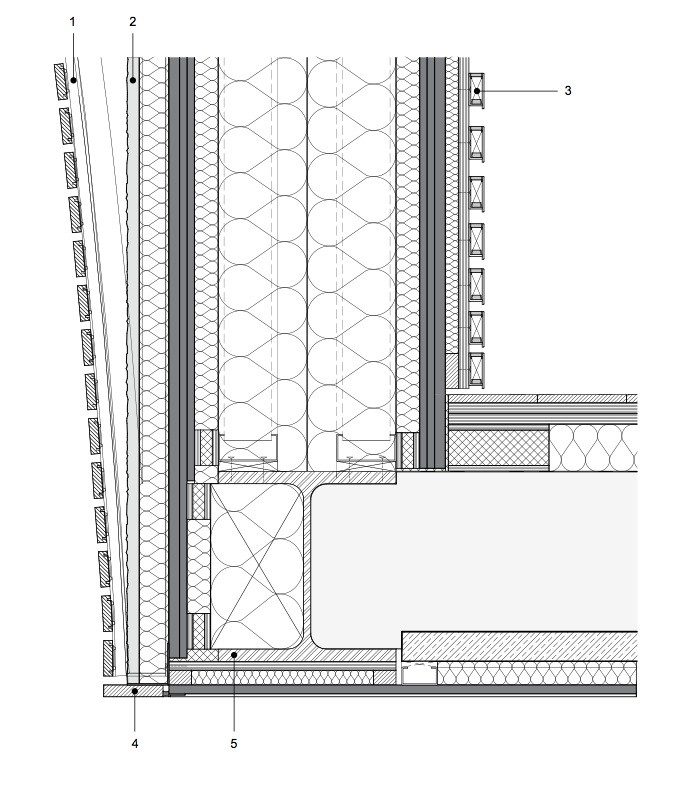
About Powerhouse Company
www.powerhouse-company.com
Powerhouse Company was founded by Charles Bessard (1970, France) and Nanne de Ru (1976, the Netherlands). Bessard and De Ru launched Powerhouse Company as a European firm, simultaneously opening two offices, one in Copenhagen, Denmark and one in Rotterdam, The Netherlands.
Powerhouse Company works on commissions that range from furniture design to architecture, planning and research, in the Netherlands, Denmark, France, Finland, Norway, Russia, Turkey and China. Their first projects such as Villa 1 and the Spiral house brought Powerhouse Company international acclaim.
The office is currently working on a wide range of projects, from furniture and yacht design, to villas, office buildings and urban planning, in countries like The Netherlands, Denmark, France, Germany, Turkey, China, Cyprus and Portugal. Powerhouse Company currently employs about 25 architects and designers in its two offices. Since every project requires a different output, Powerhouse Company takes special care in organizing the team that produces the input. Design teams are managed by the two founding partners and often in close collaboration with a wide range of external consultants and advisors. Founded on a unique model of collaboration, Powerhouse Company has developed a distinctive attitude towards collaboration with other disciplines as well as other architects.
About De Zwarte Hond
www.dezwartehond.nl
De Zwarte Hond is a design company led by Jeroen de Willigen, Willem Hein Schenk, Eric van Keulen and Jurjen van der Meer. Based in the Dutch cities of Groningen and Rotterdam and in the German city of Cologne, its 80-strong staff boast a variety of backgrounds, competences and skills which they use to work in teams on the integrated design and construction of architecture, urban development and landscape solutions.
About Graphisoft
Graphisoft® ignited the BIM revolution in 1984 with Archicad®, the industry first BIM software for architects. Graphisoft continues to lead the industry with innovative solutions such as its revolutionary BIMcloud®, the world’s first real-time BIM collaboration environment; and BIMx®, the world’s leading mobile app for lightweight access to BIM for non-professionals. Graphisoft is part of the Nemetschek Group.